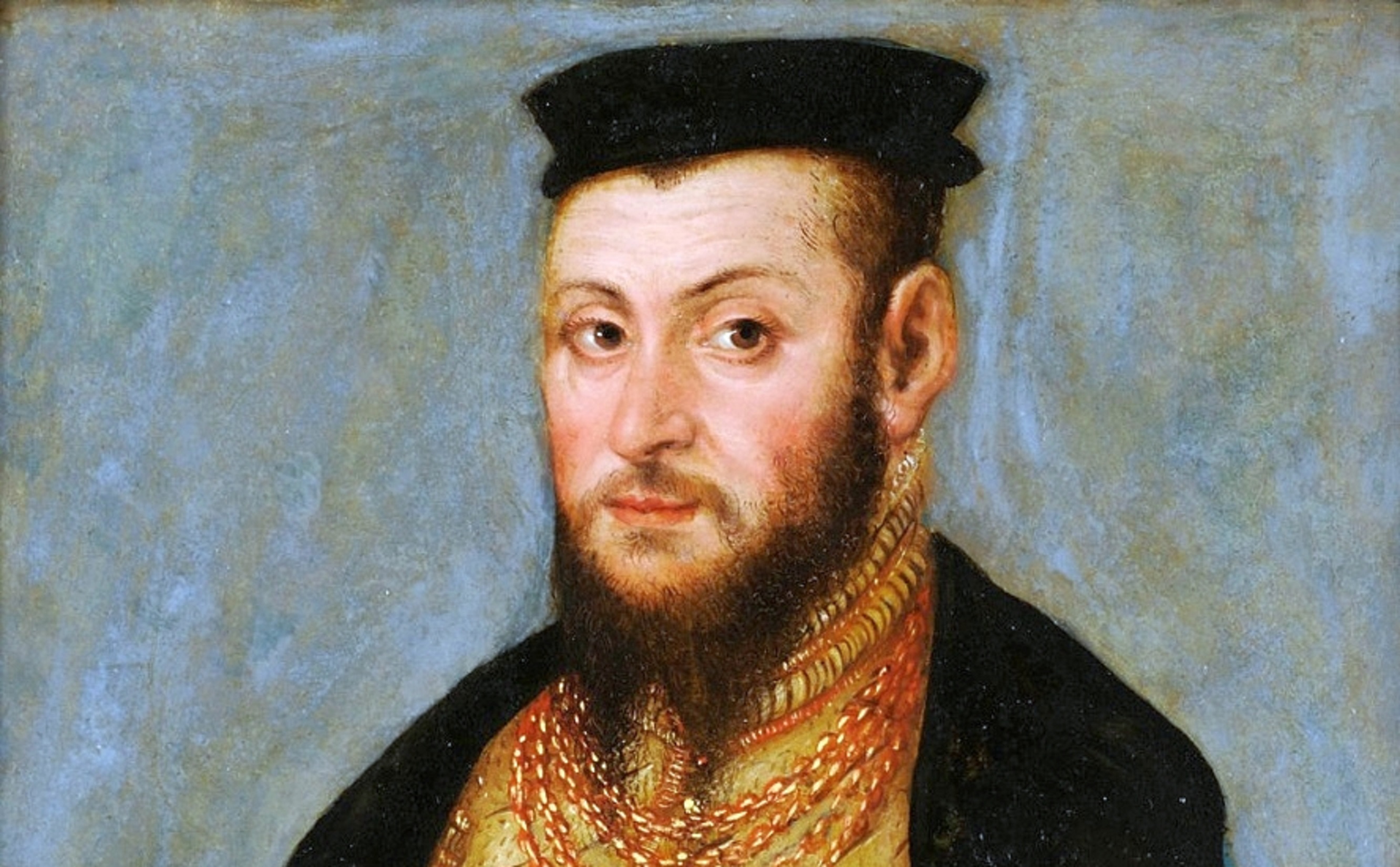It seems he basked in the full glory of the Polish “golden age” from the moment of his birth. The firstborn, long-awaited royal son, and heir to the largest state in Central and Eastern Europe, almost a million kilometers long and stretching (it strokes Poles’ ego, this phrase, and we will hear more of it) from sea to sea! – writes Wojciech Stanisławski.
by Wojciech Stanisławski
In some great, refined tome setting out the portraits of European rulers of all epochs – from Caesars and “barbarian kings” to prince-electors in wigs and unsentimental king-bureaucrats – the “kings of the 16th century” constitute a separate and exceptionally artistic category. Here they are, usually young and handsome, faithfully depicted by contemporary engravers as boldly looking to the future. At that moment, they can already be referred to as modern thinkers who understood the needs of the state common to us (casting cannons, building a fleet, [overseeing] systematic expansion and tax reforms), while at the same time still be enveloped in the fairy-tale “fog of old times” to such an extent that duels, matters of the heart and relations with loved ones had a real impact on state affairs. The patrimony was not yet completely separated from the modern bureaucratic state, “honour” is not just a rhetorical scrap of parchment, it can be quite a real casus belli.

Here they are in the full light of the Renaissance and in their ceremonial armour: beautiful as a beetle’s shell, gilded and nielloed, but still fit for a real battle. At times they duelled, at other times, after a long scuffle in the parliamentary chamber, they pushed through a package of laws. Or they would engrave a sentence with a diamond on a glass, while at other times they would say it sotto voce to those gathered around them, regardless, it would echo through later generations. They were bringing preachers, spices and bows from Italy, and later, at the head of their troops, they were setting off to the northern countries or they were listening eagerly to the news from Wittemberg. We recognize them on canvas, in rich velvets and with golden chains on their broad chests: Francis I, Henry VIII, Maximilian II, etc. And the same goes for the Renaissance ruler of the Polish-Lithuanian Commonwealth: born five hundred years ago, Sigismund II Augustus, son of Sigismund I and Bona Sforza of Milan, the last of the Jagiellonian family.
It seems he basked in the full glory of the Polish “golden age” from the moment of his birth. The firstborn, long-awaited royal son, and heir to the largest state in Central and Eastern Europe, almost a million kilometers long and stretching (it strokes Poles’ ego, this phrase, and we will hear more of it) from sea to sea! When he was five, he took part in one of the most important diplomatic events of that time: the Prussian Homage, i.e. the act of feudal subordination of the lands of the former Order of the Blessed Virgin Mary, commonly known as the Teutonic Order, to the monarch of the Republic of Poland. In the picture, painted almost four centuries later, and one of the many historical paintings to which Poles would turn during the partitions, the five-year-old golden-haired boy resolutely looks at Albert, the Duke of Prussia and the Grand Master of the Order kneeling at the feet of his father. To ensure that the heir to the throne does not disturb this solemn moment, the royal governor, Piotr Opaliński, holds him in his arms.
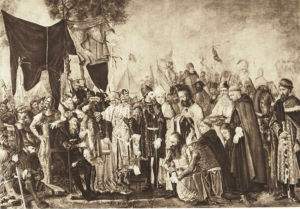
There are no other paintings from the childhood of Sigismund Augustus, which is a pity; it is interesting to imagine how the nine-year-old succeeded the throne of the Jagiellonian dynasty and the Grand Dukes’ of Lithuania, followed a year later by the primate of Poland, Archbishop Jan Łaski, crowning him in the Krakow cathedral as King of Poland. These two dignities were very clearly separated at that time. The Kingdom of Poland and the Grand Duchy of Lithuania remained in a state of union for almost a century and a half, but it was a personal union, entangled in turmoil, which had its periods of weakness. The Grand Duchy of Lithuania, the “hereditary” land of the Jagiellonian family, which was definitely the weaker party politically and economically (though territorially more significant), hoped for an independent foreign or fiscal policy, although had the opportunity to introduce it was growing less and less.
The coronation took place “vivente rege”, that is during the lifetime of the reigning king, Sigismund the Old, with a view to ensuring the possibly smooth takeover of power; however, the young prince did not have to assume the burden of rule right away. The ceremonial armour for a 13-year-old, preserved to this day at the Wawel castle in Krakow, was used at tournaments and is a testimony to b the artistry of armourers and evidence of how tall Sigismund August was as a teenager rather than to combat hardships.

He got to know the taste of real power and the hardships connected with it after the death of his father, Sigismund I the Old, in 1548. Another thing is that a few years before the death of the elderly king, most decisions were made by either his spouse or Sigismund Augustus who tried to expand the area of his autonomy, primarily in the hereditary Grand Duchy where he initially sought an agreement with the magnate families. He also tried to reform the management of estates that were within the so-called royal domain. This is also where the king got married for the second time and the conflict between affection and duty was, fortunately, Shakespearean rather than Harlequin-like.
The first wife of the young Sigismund Augustus was the daughter of Ferdinand I of Habsburg – Elisabeth – whom he married in 1543. The marriage in line with the logic of dynastic relationships was considered not very successful, which was due mostly to the severe epilepsy of the young queen. Already at the end of her life, the king began an affair with Barbara Radziwiłł, a twenty-two-year-old widow, whom he secretly married in 1547. The old king was outraged, Bona Sforza was furious, the magnates and the nobles were at the edge of a revolt. The third queen of non-dynastic origin in Poland’s history did not enjoy the general sympathy of her subjects, despite the qualities of her spirit and body. The young king broke through the resistance of the states, finally quarrelled with his mother, tamed the bishops with an anti-Reformation decree and went on his way, obtaining the coronation of Barbara as queen. However, the tiara did not help her: she died less than a year later, perfectly fitting the archetype of a young, beautiful and groomed wife due to a worse birth. Two years later, bitter and lonely, Sigismund Augustus married Elisabeth’s younger sister, Catherine of Austria, who did not give him any heirs either. Thus, once again, after the scandal with Barbara, matrimonial matters assumed primary political importance. After the long rule of the monarch, how to save the federation of Poland and the Grand Duchy of Lithuania, which had so far been built on the foundation of a personal union, i.e. the person of the common ruler?
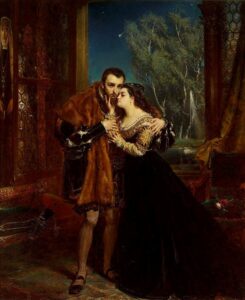
There were many reasons for this, starting with strategic ones: both countries had common enemies, present (the Grand Duchy of Moscow in the East) or potential (Crimean Tatars in the Southeast, Ottoman Porta in the South). Both were aware of the past and the potential danger of a secularized Prussia and were interested in the balance of power in the Baltic Sea region. The Lithuanian nobility was keenly interested in the political model of the Polish Crown, which guaranteed its freedoms, ownership and participation in political life on a much larger scale than in a Lithuania dominated by great families. However, in order for the real union of two states to be possible to push through, it was necessary to reorganize the political scene and sort out the reform issues in the Crown.
The so-called execution movement, named after the demand to establish (Latin: executio) the announced changes and reforms, strengthening the state, treasury and the army, weakening the magnates, creating greater opportunities for promotion for the middle nobility. Most of the executionists also counted on limiting the material and political prerogatives of the clergy, some of them even dreamed of subordinating the monarch’s Church to the English model, although it would be an exaggeration to equate the political reform movement with the fascination with the concepts of Luther and Calvin, not uncommon among the 16th-century Polish nobility: the division between the nobles was not exactly the same.
During the first decade of his rule, Sigismund Augustus tried to maintain the position of an arbiter both between the magnates and nobility, as well as in religious disputes. He is known for his sympathy for thinkers who questioned the teaching of the Church, for his friendly relations with reformers (Calvin dedicated one of his commentaries to the New Testament to him), for his dislike of the papal nuncio Lippomano, whom he persuaded to leave Poland on the first occasion, but there is no evidence to him considering to change his confession. His attitude towards the execution movement was similarly moderate: he did not want to lose his political initiative to the nobility, resentments after the campaign against Barbara lasted a long time.
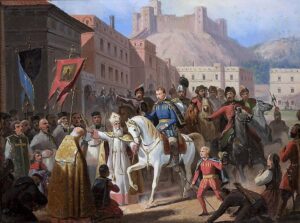
Both the future of the Polish-Lithuanian union and the situation on the state borders, where there was an ongoing fight against Moscow for Livonia, required taking one side and gaining a strong ally to the throne. The first attempts to reach an agreement ended with a false start. Only in 1562, at the Sejm, did the king announce reforms: the withdrawal of life grants for the benefit of the treasury, which remained in the hands of one family “by prescription”, the consolidation of Crown goods, limitation of the rights of the clerical courts, and the allocation of part of the Crown’s permanent income to the maintenance of a permanent army.
The “consolidation” movement was not limited to the royal lands: during the Sejm of 1564, the state structure was unified, abolishing the provincial differences of Royal Prussia and Mazovia. The union with Lithuania required a few more steps: land measurement, the creation of a network of local parliaments (representative offices of the nobility), and the creation of the office of a sub-chancellor. Also – ending the resistance of the Lithuanian magnates, which turned out to be possible only after the neighbouring Lithuanian provinces joined the Crown: Volhynia, Podlasie and two “Ruthenian” provinces. On 1 July 1569, at the Sejm in Lublin, the establishment of a real Polish-Lithuanian union was announced: one of the most durable (lasting almost two hundred years, and ending only with the partition of the state) European federations, united by the person of the king and the institution of the Sejm, as well as the single currency and foreign policy.
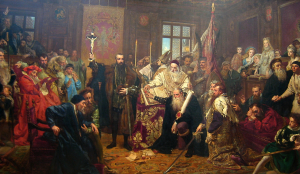
There were many reasons to be pleased – it was a country without any civil wars and without stakes for religious dissidents, the Jagiellonian family “contributed” in the form of Lithuania built into a common state, the Moscow and Tatar invasions were defeated. And yet, in one of his most famous portraits, the print of Virgilius Solis from Nuremberg, already suffering from gout, tuberculosis and the French disease, Sigismund looks into the unknown future boldly, but without a smile. He was no stranger to the melancholy experienced more than once by the “last of the family”.
Author: Wojciech Stanisławski
Transation: Alicja Rose & Jessica Sirotin

